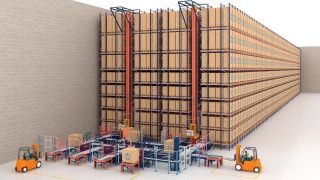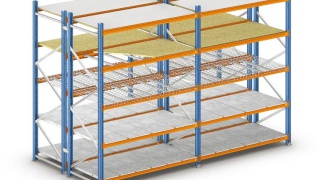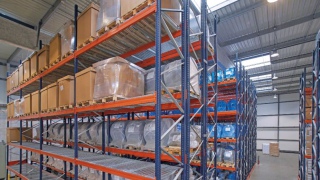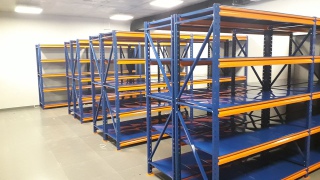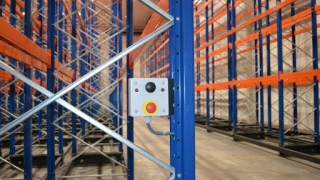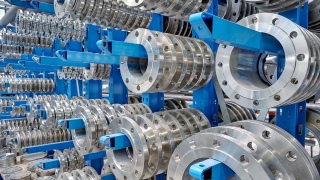
PALLET ROLLER RACKING SYSTEM
A compact storage solution for pallets where the load moves by gravity, maximizing the use of space.
Dynamic storage system: operational flexibility and perfect FIFO rotation
Roller racking systems are a compact structure consisting of storage channels equipped with rollers and placed at a slight incline, allowing pallets to roll forward by themselves. The load on pallets is introduced at the highest part of the channel and, under the influence of gravity, moves to the other end where it is ready to be retrieved.
In a dynamic warehouse, there are no aisles, increasing the storage capacity. Moreover, dynamic storage allows for the implementation of a FIFO strategy (the first pallet loaded is the first one to be retrieved), facilitating efficient inventory management.
ADVANTAGES OF PALLET ROLLER RACKING SYSTEMS
- Maximum use of space: pallet roller racks are high-density storage solutions that significantly increase warehouse capacity.
- Perfect product rotation: the system is compatible with FIFO (First In, First Out) and promotes excellent inventory control.
- Time-saving: all SKUs are available in the same aisle, allowing quick location of any product, reducing forklift maneuvering time, and speeding up pallet retrieval.
- Separation of loading and unloading: pallet loading and unloading occur from separate aisles, allowing forklifts to operate uninterrupted without getting in each other's way.
- Multiple SKUs: each channel contains one SKU, but different SKUs can be stored in each channel.
- Lower energy consumption: when used in refrigerated warehouses, this reduces energy consumption as the volume to be cooled is smaller.
- Safety and reliability: the various components of Mecalux's pallet roller racks are designed to eliminate all risks to operators and goods.
APPLICATIONS OF ROLLER RACKING SYSTEMS
Ideal solution for multiple sectors in industry and distribution
Storage in roller racks is the perfect solution for companies that want to maximize available storage space and streamline inventory handling to ensure efficient and error-free storage of goods.
Storage of perishable goods
Managing products with an expiration date is easier in sectors such as food and pharmaceuticals. |
Temporary storage between work zonesThese racks can connect two work zones, typically the production zone and the shipping zone. |
Managing a temporary bufferThe flow of goods in temporary storage areas, such as for ready-to-ship orders, is made dynamic. |
Cold storageThis compact system helps reduce energy consumption in refrigerated areas. |
 |
 |
 |
 |
_0x70_d59.png)

